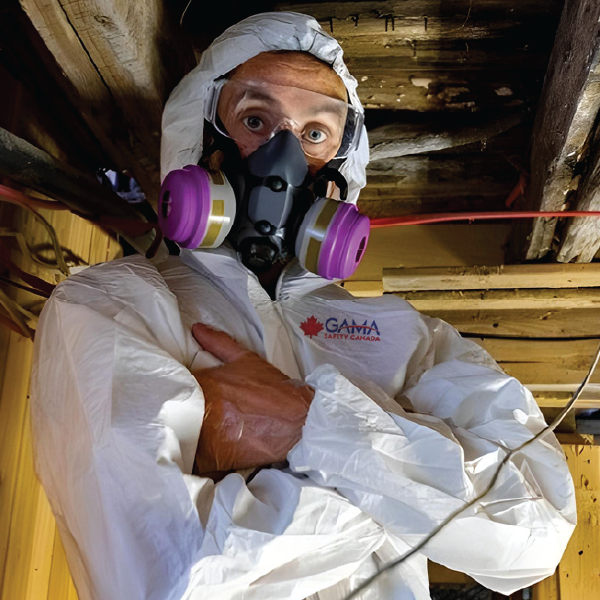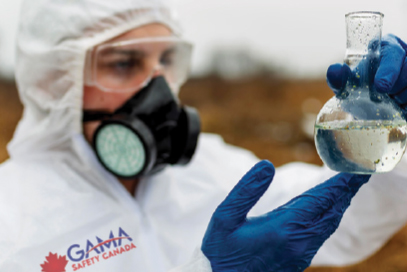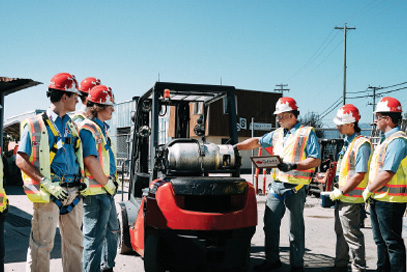Ensuring Respirator Safety
with Proper Fit Testing Procedures.
Respirator Fit Testing is essential to ensure that workers are protected from airborne hazards. The process involves verifying that the respirator creates a proper seal and functions effectively, ensuring that workers are not exposed to harmful substances like chemicals, dust, or fumes in hazardous environments.
Ensuring Respirator Safety
with Proper Fit Testing Procedures.
Respirator Fit Testing is essential to ensure that workers are protected from airborne hazards. The process involves verifying that the respirator creates a proper seal and functions effectively, ensuring that workers are not exposed to harmful substances like chemicals, dust, or fumes in hazardous environments.
OUR PARTNERS AROUND THE WORLD
OUR PARTNERS AROUND THE WORLD
OUR PARTNERS AROUND THE WORLD
OUR PARTNERS AROUND THE WORLD
OUR PARTNERS AROUND THE WORLD
OUR PARTNERS AROUND THE WORLD
OUR PARTNERS AROUND THE WORLD
OUR PARTNERS AROUND THE WORLD
OUR PARTNERS AROUND THE WORLD
OUR PARTNERS AROUND THE WORLD
OUR PARTNERS AROUND THE WORLD
OUR PARTNERS AROUND THE WORLD
OUR PARTNERS AROUND THE WORLD
OUR PARTNERS AROUND THE WORLD
Fit Testing
Procedures
Learn how to prepare and perform a proper respirator fit test, including common steps and safety verification techniques.
Respirator
Seal Check
Understand how to inspect respirators, confirm face seal integrity, and ensure full protection before entering hazard zones.
Respirator Fit Testing Safety Resources
Overview of respiratory protection requirements and how they relate to Respirator Fit Testing.
Guide on the effectiveness of beard covers and their impact on successful Respirator Fit Testing.
WorkSafeBC regulation outlining PPE standards, including Respirator Fit Testing requirements.
Explains worker responsibilities for proper respirator use and the importance of Fit Testing.
WorkSafeBC guide on safe respirator use and starting a program that includes Fit Testing.
Government of Canada guide on proper mask fitting and its role in Respirator Fit Testing.
National Defence program outlining safety practices including Respirator Fit Testing.
Canadian National Defence article highlighting why Respirator Fit Testing saves lives.
WorkSafeBC training video showing proper PPE use and its connection to Respirator Fit Testing.
Workplace Respirator Fit Testing:
Achieving a Safe and Reliable Respiratory Seal
In workplaces where employees are exposed to airborne contaminants such as dust, fumes, biological agents, or chemical vapors, a properly fitted respirator is essential. Respirator Fit Testing ensures that each worker’s facepiece forms a secure seal to provide maximum protection against inhalation hazards. This testing is not only a best practice it is a mandatory requirement under Canadian health and safety regulations for any worker required to wear a tight-fitting respirator.

RESPIRATOR FIT TESTING
Respirator Fit Testing Essentials:
Ensuring a Proper Seal for Workplace Safety
Respirator Fit Testing is a critical component of occupational health and safety programs in workplaces where airborne hazards are present. The process ensures that tight-fitting respirators, such as N95s or elastomeric facepieces, form an adequate seal on the wearer’s face. Without a proper fit, even the best respirator cannot provide effective protection. Fit testing is legally required under Canadian occupational health regulations before a worker can use a respirator in a hazardous environment.
At Gama Safety, we provide certified Respirator Fit Testing services for individuals and companies to help them meet regulatory obligations and ensure workplace safety. Whether you are a construction worker, industrial technician, or healthcare provider, having the correct respirator fit significantly reduces exposure to harmful substances. Our fit testing sessions include documentation, proper mask selection, and a certificate of compliance, supporting both legal requirements and employee health protection.
RESPIRATOR FIT TESTING Definition
Respirator fit testing is a procedure used to ensure that a specific model and size of a tight-fitting respirator forms a proper seal on an individual’s face. The purpose is to verify that no contaminants can leak through the edges of the mask, which would render the respirator ineffective in hazardous environments. This process is critical for protecting workers who are exposed to airborne pollutants, gases, biological agents, or fine particulates, especially in industries like construction, chemical manufacturing, and healthcare.
There are two main types of fit testing: qualitative and quantitative. Qualitative fit testing relies on the wearer’s sense of taste, smell, or reaction to an irritant to detect leaks. It’s generally used for half-mask respirators and is more subjective. Quantitative fit testing, on the other hand, uses a machine to measure the amount of leakage into the respirator and provides a numerical fit factor. This method is more precise and often used for full-face respirators or high-risk applications. Both types are essential tools in any workplace respiratory protection program.
A proper respirator fit is crucial because even the best-designed respirator cannot provide adequate protection if it does not seal tightly to the user's face. Gaps or poor contact areas between the respirator and the skin allow harmful contaminants to bypass the filter and be inhaled directly into the lungs. This could lead to serious health risks such as respiratory illnesses, chemical poisoning, long-term occupational diseases, or even immediate life-threatening conditions depending on the exposure.
Beyond individual safety, a proper fit ensures that companies remain in compliance with health and safety standards and reduces liability in case of workplace incidents. Respirator fit testing provides an evidence-based way to determine if the selected mask is appropriate for the user’s facial structure. It also boosts confidence among workers, knowing their protective equipment has been tested and validated. Fit testing is a proactive measure that contributes to creating a safe, responsible, and compliant work environment.
Any worker who is required to wear a tight-fitting respirator on the job must undergo a respirator fit test. This includes full-time employees, part-time staff, temporary workers, and contractors, especially those in roles that expose them to hazardous dust, chemicals, mists, or infectious particles. Common occupations requiring fit testing include construction workers, asbestos abatement professionals, healthcare staff handling infectious diseases, painters, welders, and chemical plant workers.
The requirement applies regardless of the worksite location or the duration of use. Before a worker can use a respirator in the field, they must be fit-tested for the specific make, model, and size of respirator they will wear. Additionally, fit testing must be repeated at least annually and whenever there are significant changes to a worker’s facial features, such as significant weight change, dental surgery, scarring, or facial hair that could impact the seal. The responsibility lies with the employer to ensure all applicable employees are fit-tested and that no one wears a respirator unless they have passed the test.
Qualitative and quantitative fit testing are two distinct methods used to assess how well a respirator seals against the wearer’s face. Qualitative fit testing is a pass/fail procedure based on the wearer’s subjective response to a test agent. Common test agents include sweet (saccharin) or bitter (Bitrex) aerosols. If the wearer can taste or smell the agent while wearing the respirator, the fit is inadequate. This type of testing is generally used for half-mask respirators and is simpler and less costly to administer.
Quantitative fit testing, in contrast, uses sophisticated equipment to provide an objective measurement of the amount of leakage. Machines such as the PortaCount use ambient aerosol, generated aerosol, or controlled negative pressure to calculate a numerical fit factor. This method is considered more accurate and is typically used for full-facepiece respirators or when the highest level of protection is needed. While quantitative tests are more complex and require technical expertise, they offer precise data and are required in many high-risk or regulated environments.
Respirator fit testing must be performed before a worker uses a respirator for the first time, and it must be repeated at least once every 12 months thereafter. However, testing is also required any time there is a change that could affect the fit of the respirator. This includes significant weight gain or loss, dental work, facial surgery, scarring, or any other change that might alter the facial contours and compromise the respirator seal.
Furthermore, if a worker changes to a different brand, model, or size of respirator, a new fit test must be conducted to confirm the seal with the new equipment. Annual fit testing is not only a best practice but a regulatory requirement in many jurisdictions. By conducting fit testing regularly and after any relevant changes, employers demonstrate commitment to workplace safety and reduce the risk of exposure to hazardous substances. Fit testing also helps reinforce proper donning techniques and identifies potential issues early.
During a respirator fit test, the individual first selects the appropriate respirator size and model. The test begins with a seal check, where the wearer verifies whether the respirator appears to fit properly. For qualitative testing, a hood is placed over the person’s head, and a test substance (e.g., saccharin or Bitrex) is introduced. The wearer performs a series of exercises like turning their head, speaking, and bending, while trying to detect any taste or smell of the substance.
For quantitative testing, the process involves attaching the respirator to a machine that measures the concentration of particles outside the mask compared to those inside. The wearer still performs physical movements to simulate workplace activity. The machine calculates a fit factor that reflects the seal’s effectiveness. If the fit factor meets or exceeds the minimum required value, the test is passed. If not, the individual must try a different size or model and retest until a proper fit is achieved. The entire process is carefully documented and often includes training on proper use and maintenance of the respirator.
RESPIRATOR FIT TESTING Legislation
Respirator fit testing in Canada is regulated under both federal and provincial/territorial Occupational Health and Safety (OHS) laws, and is further guided by the Canadian Standards Association (CSA) Standard Z94.4-18, titled Selection, Use, and Care of Respirators. These regulations outline the employer’s legal duty to protect workers from exposure to airborne contaminants through the implementation of a comprehensive respiratory protection program, which includes fit testing.
In practice, most provinces refer to CSA Z94.4-18 within their regulations. This standard requires employers to ensure that all workers using tight-fitting respirators are properly fit tested before use, and at least annually thereafter. The standard also mandates that only trained and competent individuals perform fit testing, and that results are documented and retained. Compliance with these regulations is essential not only for safety but also to meet legal obligations and avoid penalties during workplace inspections by authorities such as WorkSafeBC or Ontario’s Ministry of Labour.
Respirator fit testing is not required in all workplaces, but it becomes mandatory wherever workers are required to use tight-fitting respirators to protect against hazardous airborne substances. Employers must conduct a hazard assessment to determine whether respiratory protection is necessary based on exposure risks. When hazards cannot be adequately controlled through engineering or administrative means, the use of personal protective equipment (PPE) like respirators becomes necessary—and with that, fit testing is legally required.
Industries where fit testing is commonly mandatory include construction (especially during work with asbestos or silica), healthcare (during infectious disease outbreaks), painting, welding, and confined space work. In these scenarios, the employer must ensure every worker required to wear a respirator has undergone a successful fit test. Failure to do so is considered a violation of occupational health and safety laws and can lead to significant penalties, work stoppages, or increased liability.
The CSA Z94.4-18 standard, published by the Canadian Standards Association, is the national benchmark for selecting, using, and maintaining respiratory protective equipment in Canadian workplaces. It establishes clear requirements for conducting respirator fit testing, implementing a respiratory protection program, training users, and maintaining documentation. The standard is recognized across all provinces and often referenced in provincial OHS regulations.
One of the key elements of CSA Z94.4-18 is the requirement for fit testing to be completed before first use and repeated at least annually. It also specifies acceptable methods for qualitative and quantitative fit testing and emphasizes that testing must be performed by competent personnel using approved techniques. Employers who follow CSA Z94.4-18 can ensure their programs meet or exceed legal expectations, providing a defensible position in case of audits or incidents. While not a law itself, the standard becomes legally binding when incorporated into provincial OHS legislation, which is the case in most jurisdictions in Canada.
After completing a respirator fit test, employers are legally required to maintain comprehensive records for each tested employee. These records must include the employee's name, the date of the fit test, the type of fit test performed (qualitative or quantitative), the brand, model, and size of the respirator tested, the test results (pass/fail or numerical score), and the name of the person conducting the test. The documentation must be retained for as long as the employee uses the respirator and updated with each annual test or after any facial changes.
These records are not only important for internal compliance but are also crucial during inspections by OHS officers or during workplace investigations. If a worker experiences a respiratory incident and no documentation is available, the employer could be held liable for negligence. Maintaining up-to-date records demonstrates due diligence, helps ensure ongoing compliance, and allows safety officers to track trends and improve respiratory protection strategies.
The primary responsibility for respirator fit testing compliance lies with the employer. According to Canadian OHS regulations and CSA Z94.4-18, employers must ensure that fit testing is conducted, documented, and repeated annually or when conditions change. This includes selecting appropriate respirators, providing training, and designating competent personnel to perform the tests. Employers must also enforce policies that prevent employees from using respirators unless they have successfully passed a fit test.
Supervisors and safety officers play a crucial role in overseeing daily compliance and ensuring that only trained and fit-tested personnel use respiratory protection. However, it is ultimately the employer who is legally accountable. Workers also have responsibilities under the law, including reporting any changes to their physical condition that could affect the respirator fit and following safe work procedures. Still, if compliance is not met, enforcement actions, penalties, and liability fall directly on the employer.
Non-compliance with respirator fit testing regulations exposes employers to serious legal and financial consequences. Regulatory agencies such as WorkSafeBC, CNESST (Quebec), or Alberta OHS can impose fines, citations, or work stoppage orders if a company fails to meet respirator fit testing requirements. These penalties vary by province but can be severe, particularly if worker exposure has resulted in illness, injury, or death due to the lack of a proper respiratory protection program.
Beyond regulatory fines, non-compliance can lead to civil lawsuits, especially if an employee suffers long-term respiratory damage or illness attributable to improper or absent fit testing. Insurance companies may refuse to cover costs if the employer is found negligent. Additionally, the company’s reputation can be severely damaged, resulting in lost contracts, employee turnover, and public distrust. Ensuring compliance with fit testing is a preventive strategy that protects workers’ health, safeguards business operations, and reduces the risk of litigation or regulatory scrutiny.
Other Courses You May Be Interested In.
Workers who complete RESPIRATOR FIT TESTING training often continue their safety education with the following programs:"
More Courses
Online Courses
"Explore & Book Online Courses!
Have a Question?
"We’re here to help! Click the button to get in touch."


